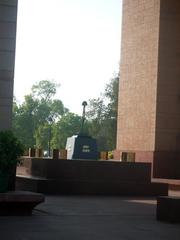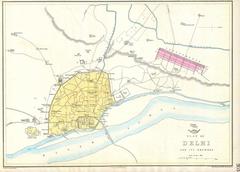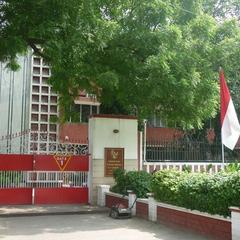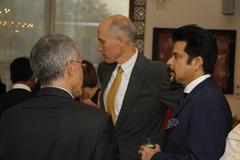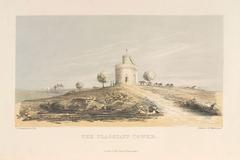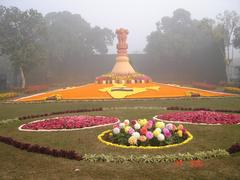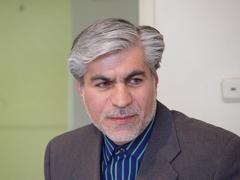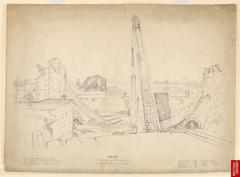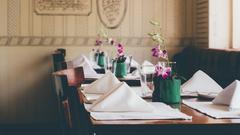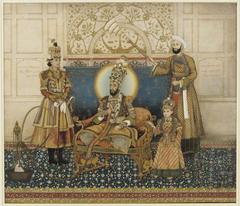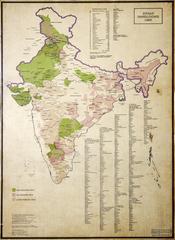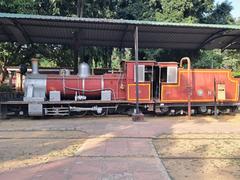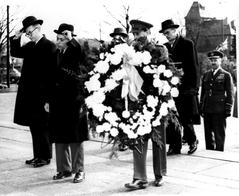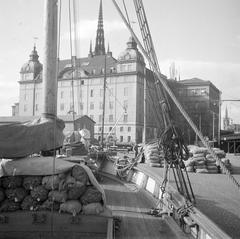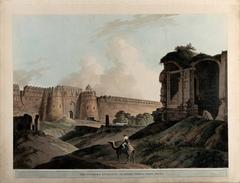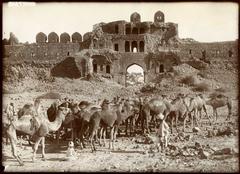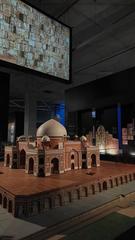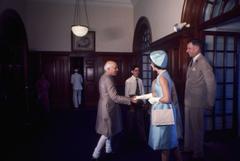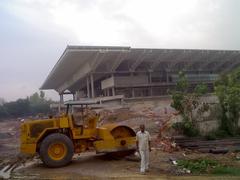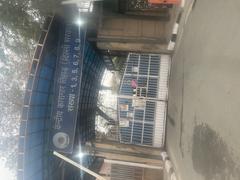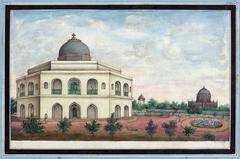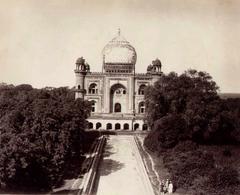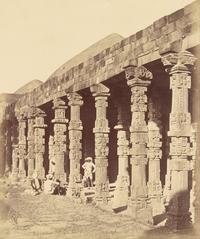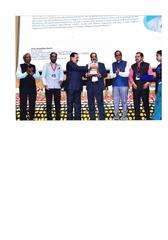Guide to Visiting Rajon Ki Baoli, New Delhi, India
Date: 24/07/2024
Introduction
Nestled within the heart of Delhi’s Mehrauli Archaeological Park lies Rajon ki Baoli, a fascinating stepwell that offers a glimpse into India’s medieval architectural and cultural heritage. Constructed in 1506 CE by Daulat Khan during the reign of Sikander Lodi, this architectural marvel is a testament to the ingenuity and craftsmanship of the medieval period (Wikipedia, Hindustan Times). The stepwell’s name, Rajon ki Baoli, translates to ‘Baoli of the Masons,’ reflecting its historical use by masons for drinking and cooking purposes (Tour My India). The stepwell is a fine example of Indo-Islamic architecture, featuring intricate stone carvings, ornate arches, and a functional design that provided a natural respite from the heat (So City). Beyond its architectural beauty, Rajon ki Baoli also served as a social hub and place of recreation, adding to its cultural and social significance (Medium). This comprehensive guide will provide you with all the necessary information to make your visit to Rajon ki Baoli a memorable experience, including historical background, architectural details, visitor information, and travel tips.
Table of Contents
- Introduction
- History and Significance
- Visitor Information
- Preservation and Current State
- Comparative Analysis with Other Baolis
- Nearby Attractions
- Conclusion
- FAQ
- Sources
History and Significance
Historical Background
Rajon ki Baoli, also known as Rajon ki Bain, is a significant historical stepwell located in the Mehrauli Archaeological Park of Delhi, India. This architectural marvel was commissioned by Daulat Khan in 1506 CE, during the reign of Sikander Lodi of the Lodi dynasty, which was the last pre-Mughal dynasty in India (Wikipedia). Daulat Khan, the governor of Lahore at the time, later invited Babur to invade the Lodi Empire, leading to the establishment of the Mughal Empire in India (Hindustan Times).
Architectural Significance
The architecture of Rajon ki Baoli is a testament to the ingenuity and craftsmanship of the medieval period. The stepwell is primarily subterranean, with only the topmost storey visible above ground. The structure features a courtyard surrounded by a verandah with numerous beautiful pillars and arches, designed in the typical North Indian fashion of that era (So City). The steps leading down to the water are constructed in such a way that the temperature becomes cooler as one descends, providing a natural respite from the heat.
The stepwell is enclosed by high walls on the east and west sides, with steps leading down from the north. The walls have narrow walkways and twelve pillars on each side, encasing arched niches. This design not only served functional purposes but also added to the aesthetic appeal of the structure (Wikipedia).
Cultural and Social Importance
Baolis, or stepwells, have been an integral part of Indian culture since as far back as 600 AD. These structures were initially built to access groundwater, especially in arid regions like Delhi. Over time, baolis evolved from being mere water sources to becoming social hubs and places of recreation. They provided refuge from the scorching tropical heat and were often located near temples and mosques, facilitating religious rituals and social gatherings (Medium).
Rajon ki Baoli, in particular, was used by masons (raj) for some time, which is how it got its name. The stepwell also includes a mosque and a tomb within its enclosure, adding to its historical and cultural significance (Wikipedia).
Visitor Information
Visiting Hours and Tickets
Rajon ki Baoli is open to visitors from 10 AM to 5 PM. There is no entry fee, making it an accessible destination for all. Visitors are advised to wear comfortable footwear, as exploring the stepwell involves descending several steps. Additionally, carrying water and some snacks is recommended, as there are limited facilities within the park.
Travel Tips and Accessibility
The best time to visit Rajon ki Baoli is during the cooler months, from October to March, when the weather is pleasant. The site is located within the Mehrauli Archaeological Park, which is home to several other historical monuments. The park itself is a history buff’s delight, with monuments of immense historical significance scattered throughout the area. Public transportation and taxis are readily available, making it easy to reach the site.
Special Events and Guided Tours
While there are no regular special events at Rajon ki Baoli, guided tours can be arranged through various travel agencies and local tour guides. These tours often include detailed historical contexts and anecdotes, enriching the visitor experience. Some tours also cover nearby attractions, providing a comprehensive understanding of the area.
Preservation and Current State
Despite its historical significance, Rajon ki Baoli, like many other baolis in Delhi, has faced neglect over the years. The water in the stepwell is no longer potable and has turned rancid green, losing much of its former grandeur. However, the structure still provides a cool shelter and a rare haven of peace for visitors (Medium).
The Archaeological Survey of India (ASI) has taken steps to protect and preserve this historical monument. Efforts have been made to maintain the structure and its surroundings, ensuring that it remains a significant part of Delhi’s rich historical tapestry (So City).
Comparative Analysis with Other Baolis
Rajon ki Baoli is one of several notable baolis in Delhi, each with its unique history and architectural features. For instance, the Agrasen Ki Baoli near Connaught Place is another famous stepwell that attracts many visitors. Built during the time of Maharaja Agrasen, this baoli is known for its intricate design and historical significance (So City).
Similarly, the Hazrat Nizamuddin ki Baoli, located near the Dargah of Hazrat Nizamuddin Auliya, is considered sacred and has an active underground spring. This baoli has been restored to its original depth and continues to serve the community (Medium).
Nearby Attractions
Rajon ki Baoli is located within the Mehrauli Archaeological Park, which houses several other historical monuments including the Qutub Minar and the Dargah of Qutb-ud-din Bakhtiyar Kaki. Visitors can explore these nearby attractions to get a fuller experience of Delhi’s rich history. The park is also a great spot for photography, with its lush greenery and historical structures providing a picturesque backdrop.
Conclusion
Rajon ki Baoli stands as a remarkable example of medieval Indian architecture and engineering. Its historical significance, coupled with its architectural beauty, makes it a must-visit destination for anyone interested in exploring Delhi’s rich cultural heritage. Whether you’re a history enthusiast, an architecture aficionado, or simply looking for a peaceful retreat, Rajon ki Baoli offers a unique and enriching experience.
FAQ
Q - What are the visiting hours for Rajon ki Baoli?
A - Rajon ki Baoli is open from 10 AM to 5 PM daily.
Q - Is there an entry fee for Rajon ki Baoli?
A - No, there is no entry fee for visiting Rajon ki Baoli.
Q - What is the best time to visit Rajon ki Baoli?
A - The best time to visit is during the cooler months, from October to March.
Q - Are there guided tours available?
A - Yes, guided tours can be arranged through various travel agencies and local tour guides.
Q - What are some nearby attractions to Rajon ki Baoli?
A - The Mehrauli Archaeological Park, where Rajon ki Baoli is located, also houses the Qutub Minar and the Dargah of Qutb-ud-din Bakhtiyar Kaki.
References
- Rajon ki Baoli - Wikipedia. (n.d.). Retrieved from Wikipedia
- Dive into history with Delhi’s baolis. (2022, June 10). Hindustan Times. Retrieved from Hindustan Times
- Rajon Ki Baoli - Tour My India. (n.d.). Retrieved from Tour My India
- Step into History: Hidden Baolis of Delhi. (2019, April 25). Medium. Retrieved from Medium
- Rajon Ki Baoli - So City. (n.d.). Retrieved from So City
- Rajon Ki Baoli: Well of History Loses Sheen. (2017, July 31). DNA India. Retrieved from DNA India


